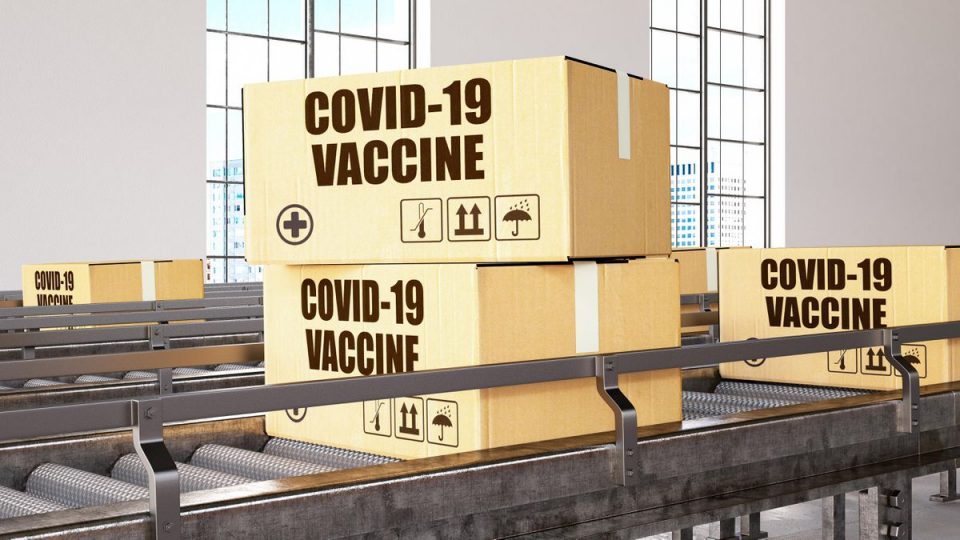COVID-19 Vaccine Production Line. Boxes on a Conveyor . 3d Render
getty
The fight against covid continues—along with the challenges in obtaining and distributing the vaccine—with President Biden scheduled to brief governors about this urgent situation later today. The latest supply and distribution problems are providing business leaders with a continuing education on the best and worst ways to prepare for and respond to crisis situations.
But the problems, as concerning as they are, indicate other issues that need to be addressed as well.
Utilizing Resources
Saeideh Mirghorbaniis is an assistant professor of business analytics and operations at Binghamton University’s School of Management where she conducts research into the applied operations of healthcare systems.
“From the distribution point of view, it seems that the states and major cities have not started to utilize their entire available resources,” she observed.
More Sites Needed
“We already know that the hospitals are full, and the frontline healthcare workers are overwhelmed with Covid-19 patients. We need fresh venues and personnel. Therefore, it is time to establish temporary vaccination sites and attract volunteers to boost the vaccination process. We have seen an incredible response to national volunteering opportunities, so why not take advantage of that now.”
Inaccurate Estimates
“Also, it appears to me that the estimations are not accurate enough,” Mirghorbaniis observed. “We are seeing some states have excess vaccines, while the others are complaining about shortages.” She said,”Keep in mind that the demand for the vaccine is affected by many factors now, such as skepticism and accessibility. Furthermore, the states need to be swift in redistributing the vaccine when there are extras.”
She recommended, “…vaccines should remain in federal possession as long as they are not injected, so the states won’t be able to hoard them while the other states are struggling with the lack of vaccine supplies.”
The Importance of Prevention
Doug C. Brown is a U.S. military veteran and the CEO of Business Success Factors. He said, “The best crisis management is crisis prevention (knowing you should take action and taking action prior to the crisis). Business leaders can learn to act more quickly when they feel that something might become a problem.
“The federal government knew there was a potential crisis with Covid and did not even disclose it to the public, which in turn, expanded the disease’s proliferation,”he observed. “In turn, this has caused a greater need for more vaccines, therefore taxing the system of being able to produce enough vaccines in a timely manner, leading to the need for crisis management. This could have been prevented by taking action early.”
The Roots Of The Problem
“The problem we are experiencing right now with vaccine supply and distribution actually started years ago,” noted Thomas Miller, vice chairman of Pinkerton, a global risk security and business consulting firm. That’s when medical supplies, materials, and ingredients were off-shored to countries including India and China.
“In a public health emergency, when shipping stops, and countries start to conserve in-country resources, the supply chain dries up pretty fast. That is what we started within the USA when Covid-19 really took hold—we found ourselves acutely aware that we were dependent [on] foreign imports to secure our medical supply chain.”
Preparing For The Next Pandemic
To be more effective in the continued response to the Covid-19 pandemic, Miller said business and government leaders should understand “this will not be the last global pandemic that we will face in our lifetime.
“We are more mobile than ever, and so diseases will spread faster as a result. Pandemic flu and multi-drug resistant bacteria (like tuberculosis) are just waiting on the horizon. Competent leadership is going to go a long way in making sure that the response to future threats is managed consistently and grounded in science.”
More Self-Sufficiency
Miller said the “U.S. needs to become more self-sufficient at securing its own medical supply chain. An increased effort is needed at every level to make medical and pharmaceutical manufacturing in the US more attractive to pharmaceutical companies—with a specific focus on subsidizing those costs to compete with foreign suppliers.”
Improved Health Reporting and Tracking
He recommended that transparent and centralized health reporting and tracking systems be implemented within each state health department that can readily collect and share infection and spread data.
Mobile Stations
Finally, he suggested that,” Government funded mobile vaccination stations be set up [as] field clinics in areas to ensure that vaccines are available in every location.”


